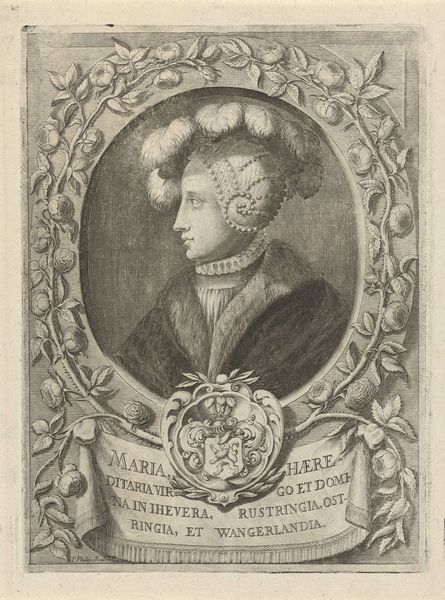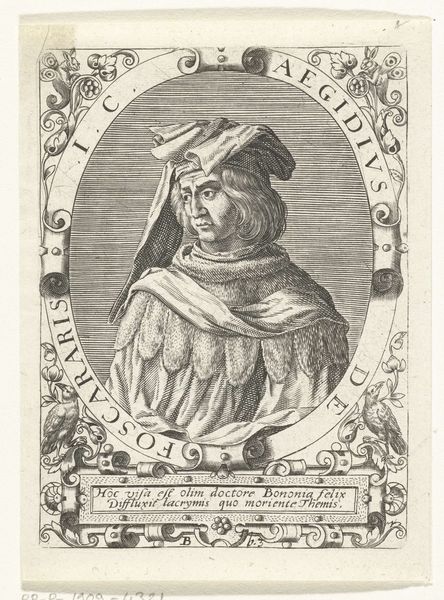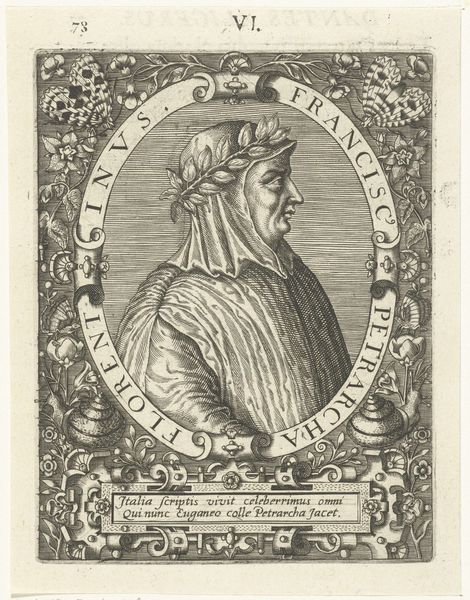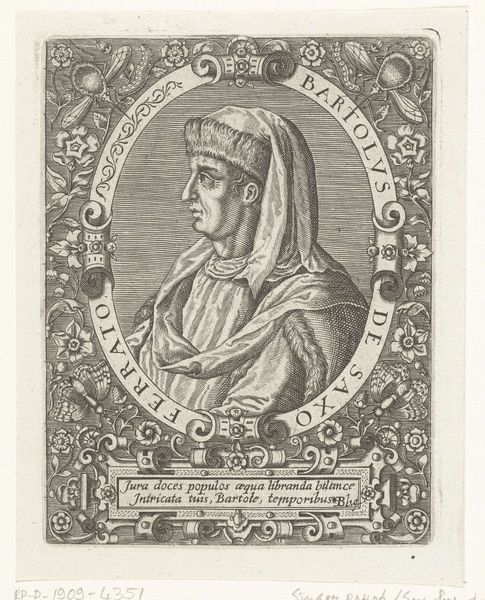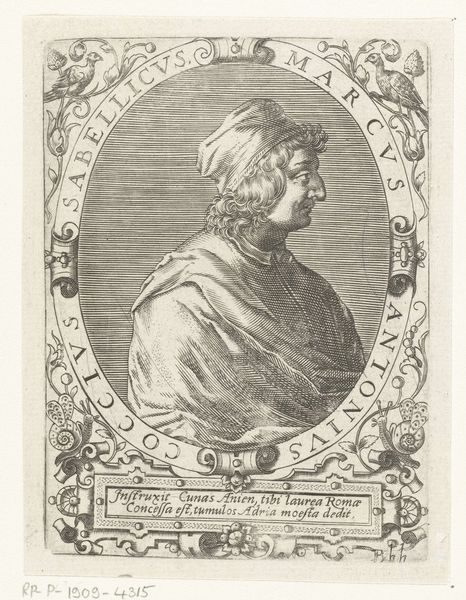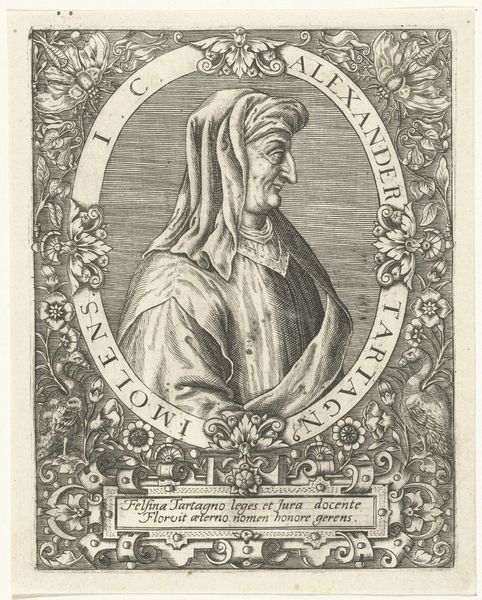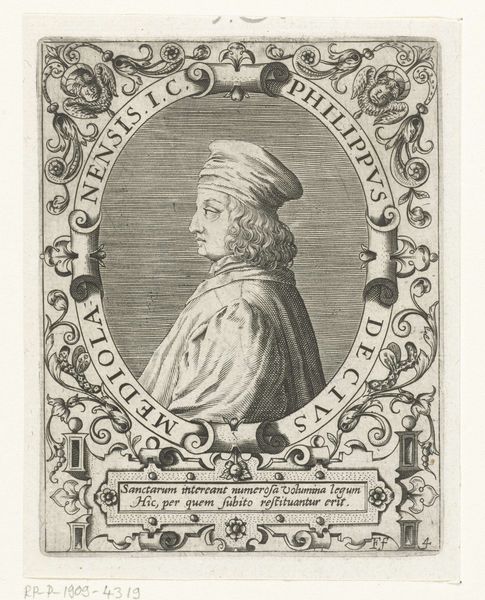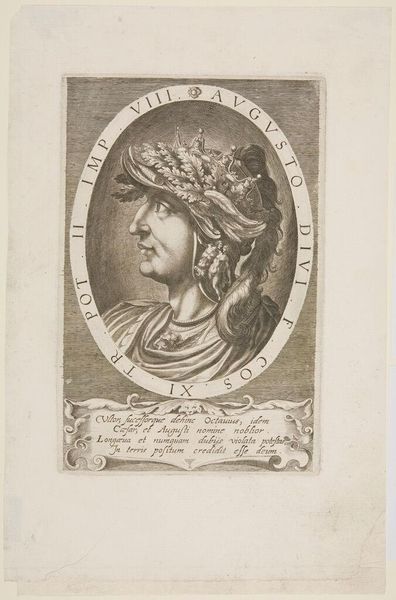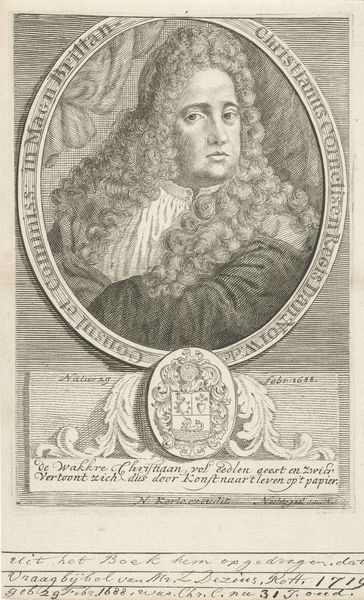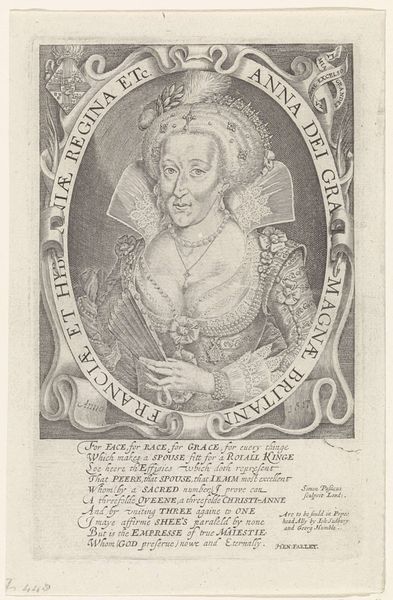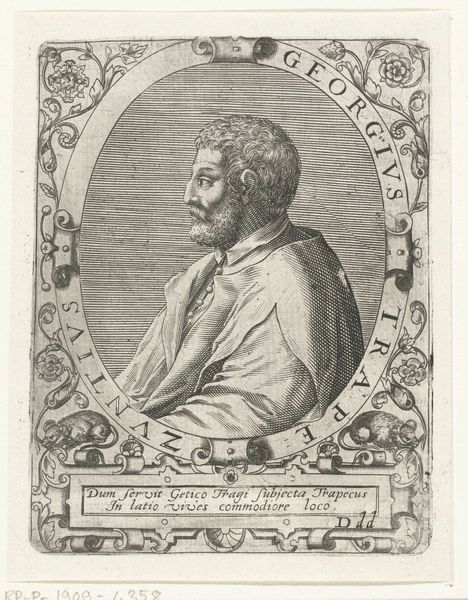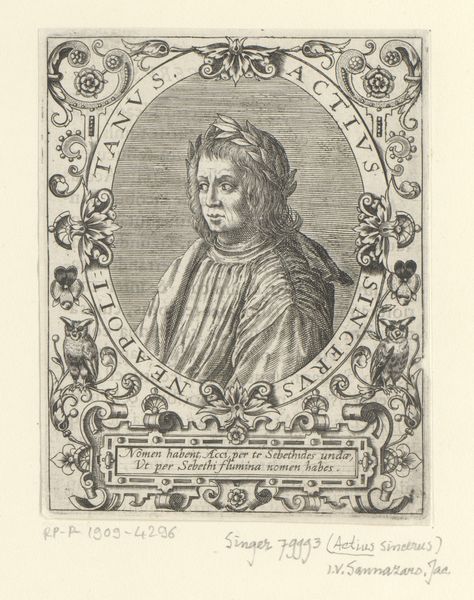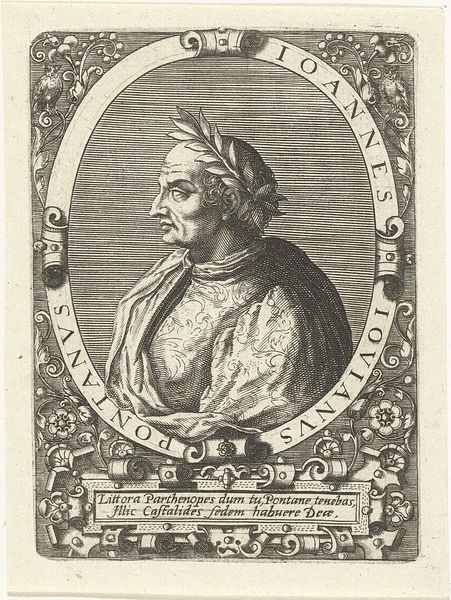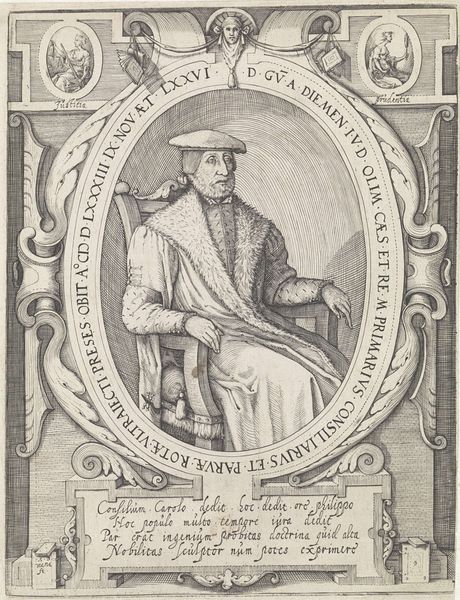
drawing, print, engraving
#
portrait
#
drawing
#
pen drawing
# print
#
pen illustration
#
pen sketch
#
pencil sketch
#
old engraving style
#
personal sketchbook
#
pen-ink sketch
#
limited contrast and shading
#
pen work
#
sketchbook drawing
#
italian-renaissance
#
engraving
Dimensions: height 145 mm, width 115 mm
Copyright: Rijks Museum: Open Domain
Editor: This is Theodor de Bry's "Portret van Poggio Bracciolini," an engraving from around 1597 to 1599. The level of detail is really striking, especially given it’s a print. I'm curious – what catches your eye when you look at it? Curator: It's the interplay of line and form that I find most compelling. Observe how de Bry uses hatching to create a sense of depth and volume, particularly in the subject's face and clothing. Notice the contrast between the densely worked areas and the relatively blank spaces, and the overall balance that brings. Editor: I see what you mean. It's almost like the engraving technique itself becomes a subject, right? The circular frame draws so much attention to the rendering inside of it. Curator: Precisely! Consider the oval frame, a self-contained world. Do you see how the composition relies on visual rhythm and variation to contain what might feel otherwise unbound? How do you find the lettering contributing to these effects? Editor: Now that you mention it, the inscription almost functions as another decorative element. It's not just informative; it adds to the texture of the print. Curator: Indeed. The text and ornamental detail equally enhance and animate the composition as a whole, leading our eyes to constantly renegotiate our spatial interpretation within the image. Note how the decorative foliage both embraces and constrains Bracciolini’s profile, making use of symmetry as well as a touch of the wild. Editor: I hadn't thought about it that way before. So, even without knowing the historical context, you can understand a lot just by analyzing the visual components and construction of the artwork itself. Thank you. Curator: Exactly. By considering an artwork’s formal elements, we can extract many possibilities without relying exclusively on other considerations, though these enrich our interpretation. A fruitful investigation, I think!
Comments
No comments
Be the first to comment and join the conversation on the ultimate creative platform.
